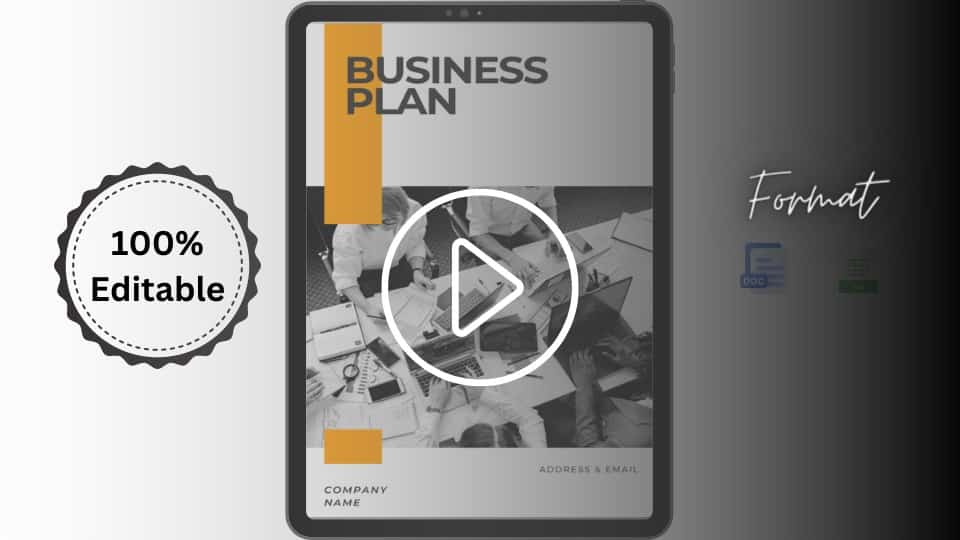What is included?
- Business Plan Template in PDF & Google Docs (30 Pages)
- Size: A4 (8.3 x 11.7 inches / 210 x 297 mm)
- List of Pages:
- Cover Page (50+ options on Canva)
- Executive Summary
- Business Description
- Business Model Canvas
- SWOT
- Organizational Overview
- Industry Analysis
- Marketing Plan
- Financials (plus a separate spreadsheet)
- Bonus: premium website builder worth $249
What can be edited?
- Cover pages (on Canva)
- Text (content, format, size, color, style)
- Move, scale & rotate objects
- Background color
- Photo
- Everything in the financial model (Google Sheet)
How to Use?
- Download the Google Doc and Spreadsheet files & start editing
- Guidelines & examples are provided to help you write the plan
- You get 20 min. free consultation which can be availed before or after the purchase. Please click on the Let’s Talk button at the top to schedule a meeting. You can ask any questions related to this template and we can also show you the template during our meeting
- Once you purchase the template then please email us- [email protected] in order to get the API key and username for the premium website builder. You will get lifetime access and support to more than 3000 website layouts.





